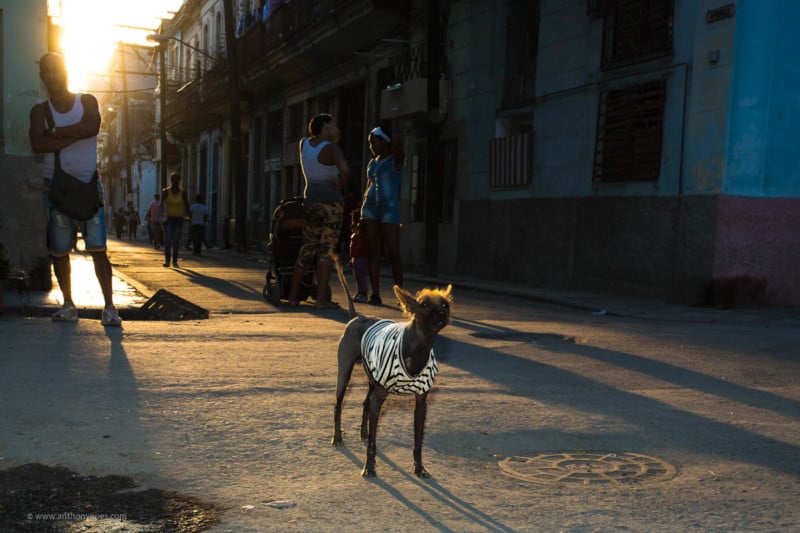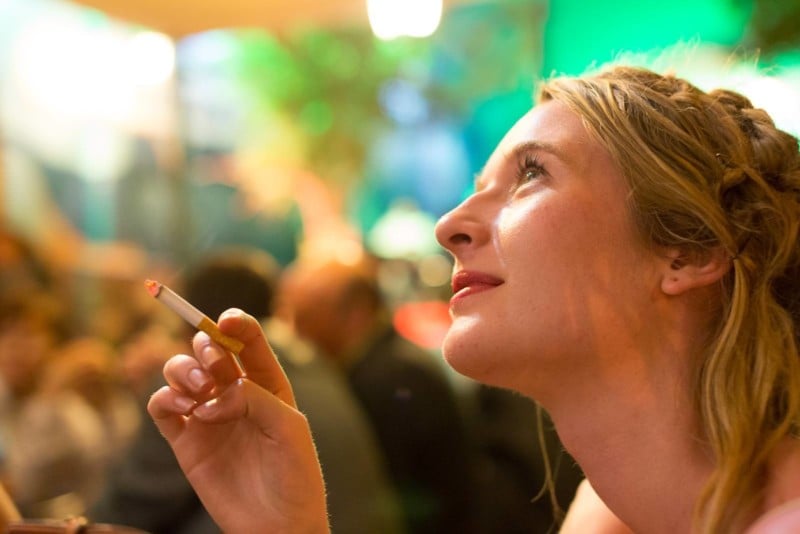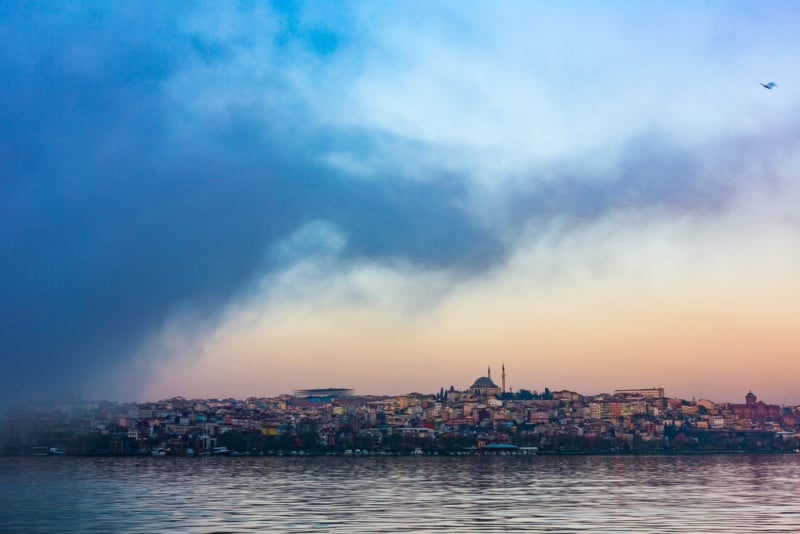How to Find the Perfect Angle
![]()
You know those moments when you’re chimping and wonder why that amazing shot that you thought was going to be, well, amazing just isn’t? Your exposure was right – check; white balance – check; aperture – check; shutter – check. Lens… hmm. Let’s see. Lens? Yes, I shot with the right lens. If you are shooting competently and things are still not working out like you would want them to, I have a great piece of advice for you.
There is a tool in your kit that beginners rarely use to full advantage. I’m talking about your feet. At first, they may not seem like critical kit, but let me assure you — they are. And here’s why.
“A good photograph is knowing where to stand.” —Ansel Adams
If you ever have watched a pro shoot, you will notice a common character trait they all share. They move, a lot. They are trying to get their movement and positioning just perfect.
Now we all move and position ourselves when photographing but what a pro knows and you may not, is the exact spot to be for the best shot. (OK – so maybe we can’t all be as elegant as this guy, but you know, just keep it moving).
In this next image, my subjects were above and behind me. I choose a lower spot to capture their shadows:
![]()
Knowing where to stand is part of creating an attractive background, of getting a great angle in a portrait, and something of interest in a landscape foreground.
These can all be fixed by your position – where you are in relation to your subject.

Positioning Mistakes and Cures
1. The Panic Shot
Ever done something like this? You’re walking along and up ahead you see a really interesting looking woman sitting on a bench, with a colorful background.
You are still approaching and still haven’t passed her yet, and better still, she hasn’t seen you! What an opportunity, you think. You take a shot. Later you’re chimping and thinking “eh…It’s ok” but not what I saw.
So what happened? Position happened. And this time your position was wrong due to – fear. You let your fear get the better of you and you made a panic shot.
Think of the shots you would be able to take if you’d engaged her and started to chat or just smile and point at your camera. You could stand in front of her and kneel, you could get close-ups of her face and expressions. The possibilities are endless if you overcame your fear and got closer.
“If your pictures aren’t good enough, you are not close enough.” —Robert Capa

2. Zoom zoom zoom
If you constantly put your camera to your eye, then zoom, you are almost certainly not in the right spot. That’s not how to use a zoom lens, in my opinion.
A lot has been said about primes vs zoom lens regarding quality, weight, coating and other tech stuff, but what I find is the biggest failing of the zoom lens is they make you lazy. They don’t demand you move.
It can bring your subject to you. Right? Wrong. Most of the time this is just wrong. It is one of the reasons your great shot was a dud.
Seeing an image in the mind’s eye is the image you want to capture. It is. Trust me. When you zoom perspective is changed, the angle is changed, along with depth and supporting environmental elements. The list is long. I’m not saying zooms are bad, they just can make you lazy. And they need to be combined with movement just like you would do with a prime lens.
I love my 17-40 zoom. But I probably don’t use it the same way as you do. I have a really good understanding of focal lengths. What 35mm will get me. What a 17mm is going to capture.
So when I am using my zoom I don’t go through the whole range of focal lengths (17-40m) when I put it to my eye. I know which one I will need and leave it there. Then you know what I do? I move my feet to the position I need to be in.

3. Not taking your time (working a scene)
This happens to us all, believe me. It doesn’t matter if you’re in a situation where things are static and not moving, or going to fly away, take your time and try to see things from all angles.
This will make your photos much better if you are making the effort to deconstruct a scene – break down the elements, change the relationship between them using perspective or just stop and THINK about it for a moment. A lot of the interrelationship between elements in a scene can be changed with good movement.
Figure out where you need to be, how high you should be standing and how to eliminate clutter from the background. Make thoughtful choices and shoot. Then think and move again.
![]()
Some Real-Life Examples
To me knowing that something is special, getting to that point where you think – oh wow – that is something that a combination of your heart and soul and eyes is telling you. This is something that is just not ordinary anymore.
“It is an illusion that photos are made with the camera… they are made with the eye, heart, and head.” —Henri Cartier-Bresson
There is nothing mathematical or technical about that deep stirring inside you that says – yes! – when you see something beautiful or wonderful. So although you can rely on some pretty mathematical and technical concepts to help you get there – rule of thirds, Fibonacci numbers, leading lines etc. – in the end it comes down to you pushing yourself to finding a photo that when you capture it on camera, makes your heart pulse that little bit stronger.
Let’s now head to East London. One morning in East London I came across this pub in some great light. I took a shot more for the light than actually thinking about my subject and the result was way less than spectacular.
![]()
But I don’t like to waste nice light so I got closer for a detail shot, again mostly for the light.
![]()
I liked that much better. I love a wall with interesting textures. You’ve got the paint, the graffiti, the different shades of brick, the glass, the pipes – all these interesting things made quite touchable-looking by this dappled light. Now I could have stopped there…
But one very important thing to know about light is that if it’s doing something interesting to what you are looking at – it’s highly likely to be doing interesting things to many other things around you.
Don’t get complacent by the first bit of great light you see, go further and explore.
I went around to the front of the building and immediately I got a much much better shot.
![]()
The front light that had made the back of the building so interesting was now creating a totally different sensation from the front with backlight. I like the long shadows of this shot, the strong element of the sun and the better leading lines by my chosen subject.
Also, there is a good play with color contrasting the coolness and the shadows and the warmth of the direct sunlight. Taking your time a working a scene will almost always get you better images.
One thing I love about London is the random craziness of very old next to very new. And that is often what I’m looking out for, especially in East London and The City. It’s really extreme there.
I was walking around and saw this particular contrast of old church and one of those new ‘temples to business’. And I thought that’s my subject – that old/new contrast. But this came out pretty boring. None of the elements in this image feels connected to each other so it lacks cohesion
![]()
And then I tried this:
![]()
I made the choice to move further back and try again. And again there is nothing to tie the elements together, to build relationships between them. So I fall back on the rule of leading lines for my next shot. At this point, after two dud shots using some simple composition rules was called for.
Rotating 90 degrees for a portrait orientation also helped eliminate the business at the edges of the frame. With few elements to deal with and some strong lines and image finally came together.
![]()
One wintry morning I am in Venice on the northern edge of the Island. It’s a beautiful morning, as you can witness from the sky. I am looking out at these pillars with lights on top in the water and a jetty. But so far nothing is striking enough but loads of potential all around.
![]()
I turn my camera into the sunrise and start to see more potential. Some nice looking shapes in the water. I can sort of make out that there is some interesting colored glass in the top of that building. But everything is in shadow, so pretty dull. So, I wait. And while waiting I move to my right a few feet to get rid of that pilon on the left and also more of the glass from the building.
![]()
I am now seeing that with more light not only would we get something interesting happening on the water, lighting everything up that’s currently in shadow, but there is also that colored glass. What I am doing here with this scene is anticipating what the light will do, once it comes out from behind the clouds.
About ten minutes later – wow, the sun changes everything!
![]()
So you can see the process of refining and removing elements here is really important.
If you find an element or two that you like – stick with it. Keep removing things from your composition that don’t add value, keep moving around your subject until you get to something that fits the impact that the subject had on you in the first place.
I hope that’s been a helpful demonstration on the importance of always moving, always searching for that killer angle. You don’t always have to make big moves. Sometimes just a few inches can have a significant impact on a shot.
It should be an exciting thought for you because it shows that even when you have a great subject and you haven’t got a great photo, there is still buckets of potential to work the scene and find something special.
About the author: Photographer Anthony Epes runs the travel photography company Cities at Dawn with his wife Diana Bird. The opinions expressed in this article are solely those of the author. You can see more of their work or sign up for their workshops on the Cities at Dawn website.